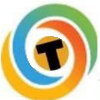Learning Thai
-
Recently Browsing 0 members
- No registered users viewing this page.
-
Topics
-
-
Popular Contributors
-
-
Latest posts...
-
30
Finally have a retirement date, what now?
Maybe add that he should get such an account. -
14
For Aussies: Alternative Australian Share Brokers to Commsec
NAB trade. I opened an NAB savings account and NAB trading account whilst in Thailand. -
0
Trump administration’s anti-woke campaign targets Smithsonian
Trump administration’s anti-woke campaign targets Smithsonian museums Amid the Donald Trump administration’s heavy-handed review of Smithsonian museums, the Guardian has seen a document compiled by the White House that details examples of how the widely visited cultural institutions have overly negative portrayals of US history. The document, based on public submissions shared with the administration, points to what it says are problematic exhibits at seven different museums, including a Benjamin Franklin exhibit that links his scientific achievements to his ownership of enslaved people and a film about George Floyd’s murder that it says mischaracterizes the police. “President Trump will explore all options and avenues to get the Woke out of the Smithsonian and hold them accountable,” a White House official said. “Until we get info from the Smithsonian in response to our letter, we can’t verify the numbers of artifacts that have been removed because the Smithsonian has removed them on their own.” More: https://www.theguardian.com/us-news/2025/aug/20/trump-administration-smithsonian-museum-review -
40
USA Trump Slammed: 'Sociopath' Over Bizarre Meeting Comments!
Does she lose her visa if they divorce? -
164
Finance Thailand Tightens Mobile Banking to Curb Scams
The Apps are Useless and not secure if one uses them In public/shops they can be Monitored and Hacked. At home on the Laptop/Computer with Internet Banking one has a Better chance to stay safe with an OTP reply by Phone .You and many people and the banks know that but won't admit that. 👍 -
0
British tourist facing a decade in prison after a scooter crash
British Visitor Could Receive Decade in Prison Following Fatal Pattaya Scooter Crash A 22-year-old British tourist, Brandon Mills from Doncaster, could face up to 10 years in prison after a motorbike stunt went tragically wrong in Pattaya on August 14, resulting in the death of 49-year-old Churairat Petchraksa. He admitted causing the accident, though was neither drunk nor on drugs, and the charge has been upgraded from reckless injury to reckless driving causing death. Mills has been released but cannot leave Thailand, with his passport confiscated, and he has already paid 30,000 baht to the victim’s family. The incident has reignited debates around Pattaya’s reputation as a nightlife zone plagued with accidents and crime, despite efforts to rebrand it as family-friendly.
-
-
Popular in The Pub








.thumb.jpg.bc523c85a8d558dbc282dca7a2e602c9.jpg)
Recommended Posts
Create an account or sign in to comment
You need to be a member in order to leave a comment
Create an account
Sign up for a new account in our community. It's easy!
Register a new accountSign in
Already have an account? Sign in here.
Sign In Now